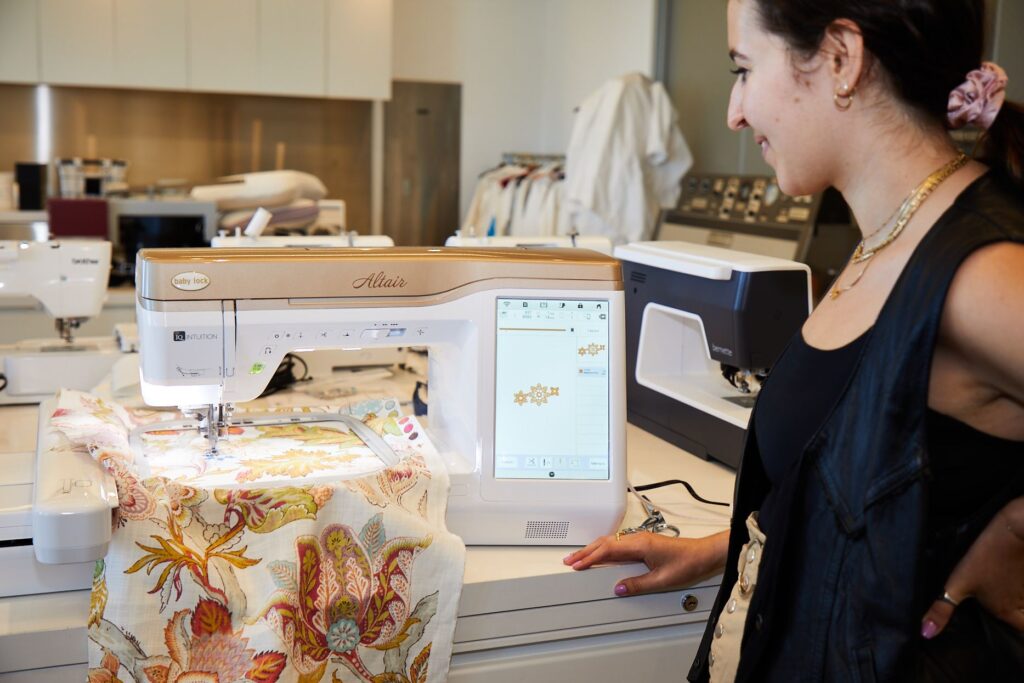
Introduction
If you work with embroidery machines, you know the DST file format is the industry standard. But what happens when your design isn’t in DST? Maybe you have a PES, JEF, or even a JPG that needs converting. That’s where best DST file converter come in.
The right converter can mean the difference between:
✔ A perfectly stitched design
✔ A wasted project with misaligned stitches or thread breaks
In this guide, we’ll cover:
✅ What DST files are and why they matter
✅ The best DST converters for beginners vs. experts
✅ Free vs. paid options (and when to upgrade)
✅ Step-by-step conversion guides
✅ Troubleshooting common DST errors
Whether you’re a hobbyist or a professional embroiderer, this guide will help you convert files seamlessly—without the frustration.
What Is a DST File? (And Why Does It Matter?)
DST (Data Stitch Tajima) is the most widely used embroidery file format. It’s compatible with almost all commercial and home embroidery machines, including:
- Brother
- Tajima
- Janome
- Bernina
Key Features of DST Files:
✔ Small file size (efficient for machine processing)
✔ Stores stitch data, colors, and machine commands (like jumps and trims)
✔ Industry standard for professional embroidery
The catch? Most designs start as other formats (like JPG, SVG, or PES). That’s where conversion comes in.
5 Best DST File Converters (Tested & Ranked)
We tested dozens of tools and narrowed it down to the top 5 DST converters for different needs.
1. Wilcom TrueSizer (Best Free Converter)
✅ Pros:
- Free and lightweight
- Converts PES, JEF, EXP → DST
- Simple drag-and-drop interface
❌ Cons:
- No editing features
- Can’t create new designs
Best For: Quick file format changes.
2. Hatch Embroidery (Best All-Around for Professionals)
✅ Pros:
- Full digitizing and editing tools
- Converts JPG, PNG, SVG → DST
- Auto-digitizing for beginners
❌ Cons:
- Subscription-based ($99/month)
Best For: Professionals who need advanced control.
3. Embrilliance (Best for Mac Users)
✅ Pros:
- Works on Mac & Windows
- Easy resizing and editing
- One-time purchase ($129+)
❌ Cons:
- Limited auto-digitizing
Best For: Hobbyists who want reliable conversions.
4. MyEditor (Best Online Converter)
✅ Pros:
- No software install needed
- Fast for simple designs
❌ Cons:
- Watermarked files in free version
Best For: Emergency conversions on the go.
5. Ink/Stitch (Best Free Digitizing Tool)
✅ Pros:
- Free and open-source
- Full manual digitizing control
❌ Cons:
- Steep learning curve
Best For: DIYers who want total customization.
Comparison Table: Which DST Converter Should You Use?
| Tool | Best For | Price | Auto-Digitize? |
|---|---|---|---|
| Wilcom TrueSizer | Quick conversions | Free | ❌ |
| Hatch Embroidery | Professionals | $99/month | ✅ |
| Embrilliance | Mac users | $129+ | ❌ |
| MyEditor | Online use | Freemium | ✅ |
| Ink/Stitch | Custom designs | Free | ❌ |
How to Convert to DST: Step-by-Step
Method 1: Using Wilcom TrueSizer (Free)
- Download and install TrueSizer.
- Open your embroidery file (PES, JEF, etc.).
- Click File > Save As and select DST.
- Transfer to your machine via USB.
Method 2: Using Hatch Embroidery (Auto-Digitizing)
- Import your JPG or PNG file.
- Use Auto-Digitize or manually adjust stitches.
- Export as DST.
Method 3: Using Ink/Stitch (Manual Digitizing)
- Import your SVG into Inkscape.
- Use the Ink/Stitch plugin to set stitch types.
- Export as DST.
Pro Tips for Flawless DST Conversions
✔ Test-stitch first – Catch errors before wasting fabric.
✔ Simplify complex designs – Too many small details can cause thread breaks.
✔ Check stitch density – 0.4mm for fills, 0.3mm for satin stitches.
✔ Use underlay stitches – Prevents puckering on stretchy fabrics.
Troubleshooting Common DST Conversion Problems
1. Machine Says “Unsupported File”
- Fix: Re-export in Tajima DST format (some machines need specific versions).
2. Jagged or Misaligned Stitches
- Fix: Increase input resolution (300+ DPI) before converting.
3. Thread Breaks During Stitching
- Fix: Reduce stitch density or increase stitch length.
FAQ: DST Conversion Questions
Q: Can I convert JPG to DST for free?
A: Yes, but manual digitizing (Ink/Stitch) works best—auto-tracing often creates messy stitches.
Q: Why does my DST file look different on my machine?
A: Check hoop size, thread colors, and machine settings—they affect the final stitch-out.
Q: What’s the easiest DST converter for beginners?
A: Wilcom TrueSizer (for format changes) or MyEditor (for simple auto-digitizing).
Final Verdict: Best DST Converter?
- For free conversions → Wilcom TrueSizer
- For professionals → Hatch Embroidery
- For Mac users → Embrilliance
- For custom designs → Ink/Stitch
Conclusion
Converting files to DST format doesn’t have to be a headache, especially when you understand proper DST digitizing techniques. Whether you choose a free tool like Wilcom TrueSizer for basic conversions or invest in pro software like Hatch Embroidery for advanced DST digitizing, the key to success lies in three steps:
- Always test-stitch first – Run a small section to check for tension issues or misaligned stitches
- Optimize your digitizing settings – Proper stitch density, underlay, and pull compensation make all the difference
- Choose the right converter for your skill level – Beginners should start with simple tools before advancing to professional DST digitizing software
Now that you know the best DST converters and DST digitizing principles, you’re ready to:
✔ Build an unlimited design library by converting various file formats
✔ Prevent costly material waste with proper testing procedures
✔ Achieve professional-quality embroidery with confidence
Remember: Great DST digitizing comes from practice. Start with simple designs, learn your software’s features, and gradually tackle more complex projects.
Still unsure about DST conversions? Ask us anything below – we’ll help you troubleshoot specific issues and improve your digitizing skills!






